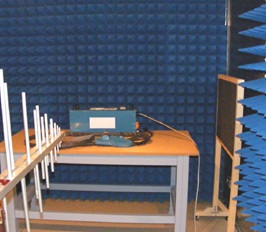 The EMC Directive 2004/108/EC is one of a number of CE Marking Directives that are getting a make-over to bring them into line with EU Decision No. 768/2008/EU, in accordance with the New Legislative Framework (NLF) that was introduced in 2008. Subsequently, a NEW recast Electromagnetic Conformity (EMC) 2014/30/EU came into force on the 18th April 2014, however, the current directive (2004/108/EC) will not be repealed until April 20th 2016 and until this 2016 date, manufacturers can continue to place products on the market that comply with the current Directive.
The EMC Directive 2004/108/EC is one of a number of CE Marking Directives that are getting a make-over to bring them into line with EU Decision No. 768/2008/EU, in accordance with the New Legislative Framework (NLF) that was introduced in 2008. Subsequently, a NEW recast Electromagnetic Conformity (EMC) 2014/30/EU came into force on the 18th April 2014, however, the current directive (2004/108/EC) will not be repealed until April 20th 2016 and until this 2016 date, manufacturers can continue to place products on the market that comply with the current Directive.
OVERVIEW:
The new Directive appears quite different to the Directive it will replace, and the pdf. version has actually doubled in size, but other than rewording, reformatting and reordering the actual changes, the impact on manufacturers is relatively slight; changing to the new Directive should not be too difficult.
SCOPE:
The scope remains the same, however, ‘Custom built evaluation kits destined for professionals to be used solely at research and development facilities for such purposes’ are also now excluded from scope.
OBLIGATIONS:
As with most of the other recast Directives that have been aligned with the NLF, for manufacturers the changes are relatively subtle, with the process being very similar as the current Directive, whilst ensuring that it follows the general principles of Article 30 of Regulation (EC) No 765/2008.
New, or enhanced, requirements for manufacturers include;
|
Additionally, the Directive now specifically details the obligations of Authorised Representatives, Importers and Distributors. The requirements for importers have particularly been elaborated, and include;
Importers shall ensure that the appropriate conformity assessment procedure has been carried out by the manufacturer. They shall also ensure that the manufacturer has drawn up the technical documentation, that the apparatus bears the CE marking and is accompanied by the required documents.
|
Article 14 of the Directive states that the manufacturer may choose to restrict the application of the EU-Type Examination (Annex III) procedure to some aspects of the essential requirements, provided that for the other aspects of the essential requirements the Internal Product Control (Annex II) procedure is applied.
The new Directive also includes increased information regarding Notified Bodies, Notifying Authorities, and Penalties for serious infringements.
TECHNICAL FILE requirements:
It is now stated that the Technical Documentation shall make it possible to assess the apparatus’ conformity with the applicable requirements of this Directive and shall include an adequate analysis and assessment of the risk(s). The technical documentation shall cover, as far as relevant, the design, manufacture and operation of the apparatus. The technical documentation shall include at least the following;
|
Essential requirements:
The Essential Requirements for Apparatus have not changed (other than replacing the word ‘Protection’ with ‘General’) however, some of the requirements for Fixed Installations are no longer contained in Annex I and are now contained within the body of the Directive.
DECLARATION:
The Declaration of Conformity shall have the model structure set out in Annex IV (a template is now provided), shall contain the elements specified in the modules of Annexes II and III as appropriate, and shall be continuously updated as required. It must also be translated into the language or languages required by the member state in which the apparatus is placed or made available on the market.
The new contents include;
|
The new EMC Directive 2014/30/EU can be found:
http://eur-lex.europa.eu/legal-content/EN/TXT/PDF/?uri=CELEX:32014L0030&from=EN
Comments are closed.










